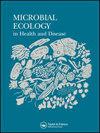Bacterial communities associated with apical periodontitis and dental implant failure
引用次数: 17
Abstract
Background Previously, we demonstrated that bacteria reside in apparently healed alveolar bone, using culture and Sanger sequencing techniques. Bacteria in apparently healed alveolar bone may have a role in peri-implantitis and dental implant failure. Objective To compare bacterial communities associated with apical periodontitis, those colonising a failed implant and alveolar bone with reference biofilm samples from healthy teeth. Methods and results The study consisted of 196 samples collected from 40 patients undergoing routine dental implant insertion or rehabilitation. The bacterial 16S ribosomal DNA sequences were amplified. Samples yielding sufficient polymerase chain reaction product for further molecular analyses were subjected to terminal restriction fragment length polymorphism (T-RFLP; 31 samples) and next generation DNA sequencing (454 GS FLX Titanium; 8 samples). T-RFLP analysis revealed that the bacterial communities in diseased tissues were more similar to each other (p<0.049) than those from the healthy reference samples. Next generation sequencing detected 13 bacterial phyla and 373 putative bacterial species, revealing an increased abundance of Gram-negative [Prevotella, Fusobacterium (p<0.004), Treponema, Veillonellaceae, TG5 (Synergistetes)] bacteria and a decreased abundance of Gram-positive [(Actinomyces, Corynebacterium (p<0.008)] bacteria in the diseased tissue samples (n=5) relative to reference supragingival healthy samples (n=3). Conclusion Increased abundances of Prevotella, Fusobacterium and TG5 (Synergistetes) were associated with apical periodontitis and a failed implant. A larger sample set is needed to confirm these trends and to better define the processes of bacterial pathogenesis in implant failure and apical periodontitis. The application of combined culture-based, microscopic and molecular technique-based approaches is suggested for future studies.与根尖牙周炎和牙种植体失败相关的细菌群落
先前,我们使用培养和Sanger测序技术证明细菌存在于明显愈合的牙槽骨中。明显愈合的牙槽骨中的细菌可能在种植体周围炎和种植体失败中起作用。目的比较与根尖牙周炎相关的细菌群落、植牙失败和牙槽骨的细菌群落与健康牙齿的参考生物膜样本。方法与结果本研究收集了40例常规种植或康复患者的196份样本。扩增细菌16S核糖体DNA序列。产生足够的聚合酶链反应产物的样品进行进一步的分子分析,末端限制性片段长度多态性(T-RFLP);31个样本)和下一代DNA测序(454 GS FLX Titanium;8样本)。T-RFLP分析显示,与健康对照样品相比,患病组织中细菌群落的相似性更大(p<0.049)。下一代测序检测到13个细菌门和373个推测细菌种,显示病变组织样本(n=5)中革兰氏阴性[Prevotella, Fusobacterium (p<0.004),密螺旋体,Veillonellaceae, TG5 (Synergistetes)]细菌的丰度相对于参考龈上健康样本(n=3)增加,革兰氏阳性[(放线菌,杆状杆菌(p<0.008)]细菌的丰度减少。结论普雷沃菌、梭杆菌和TG5(协同菌)丰度增高与根尖牙周炎和种植失败有关。需要更大的样本集来证实这些趋势,并更好地定义种植体失败和根尖牙周炎的细菌发病过程。提出了基于培养、显微和分子技术相结合的研究方法。
本文章由计算机程序翻译,如有差异,请以英文原文为准。
求助全文
约1分钟内获得全文
求助全文

 求助内容:
求助内容: 应助结果提醒方式:
应助结果提醒方式:


